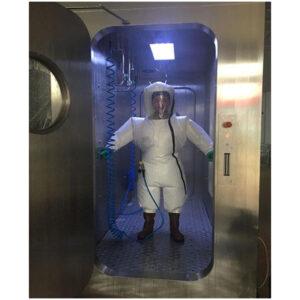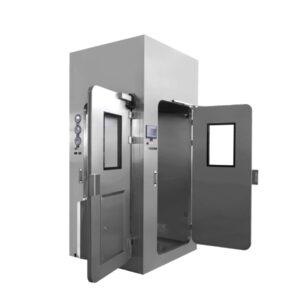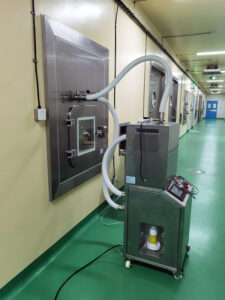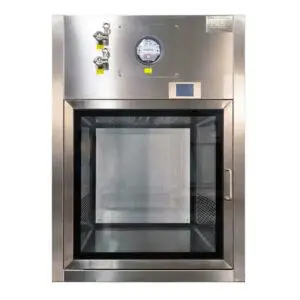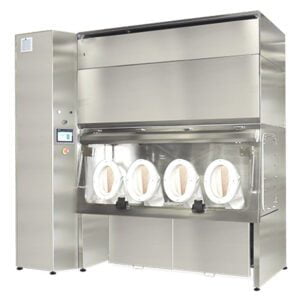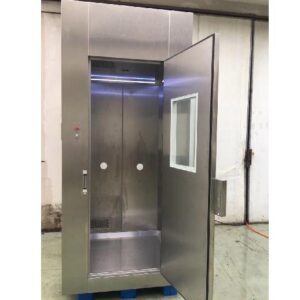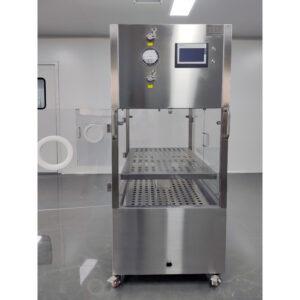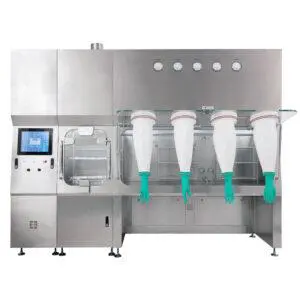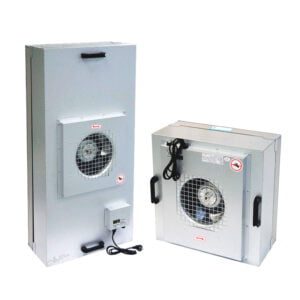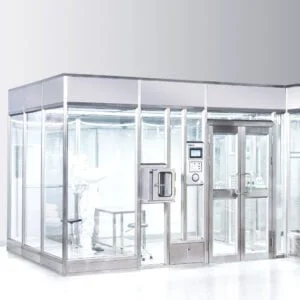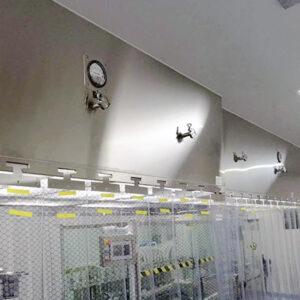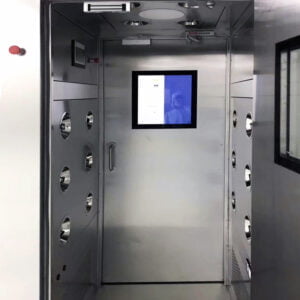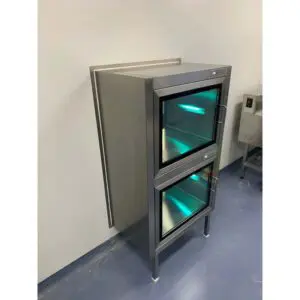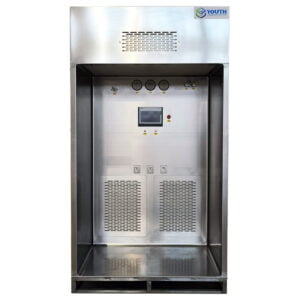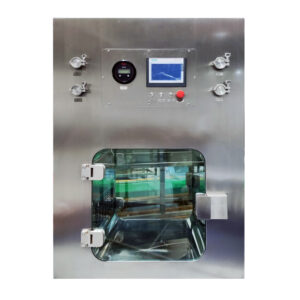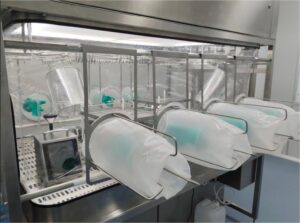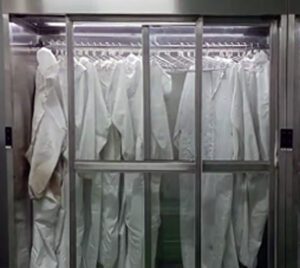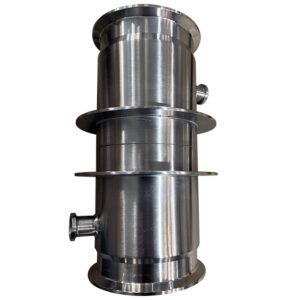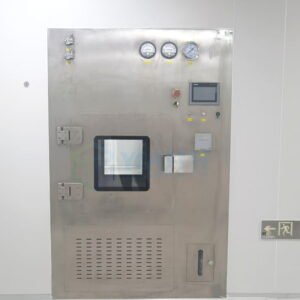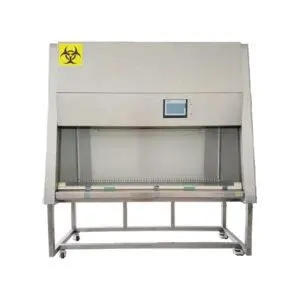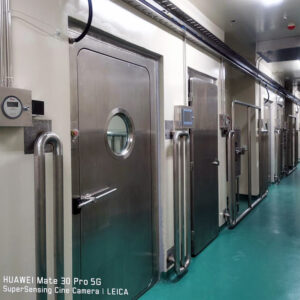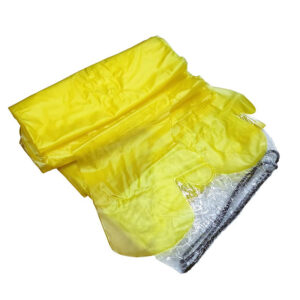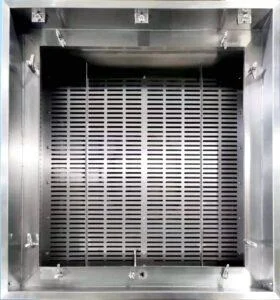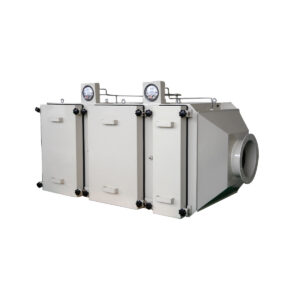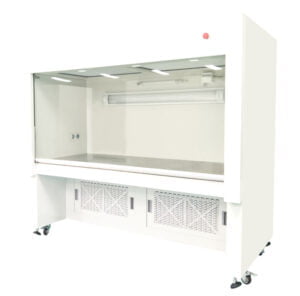In today's high-tech laboratory environments, safety is paramount. Among the critical safety features, laboratory chemical shower rooms stand out as essential components that can mean the difference between a minor incident and a major catastrophe. These specialized facilities are designed to provide immediate decontamination in case of chemical exposure, playing a crucial role in protecting researchers and lab personnel from potentially hazardous situations.
Laboratory chemical shower rooms are more than just oversized showers. They are meticulously engineered spaces that combine advanced safety features with practical design elements to ensure rapid and effective decontamination. From their strategic placement within the lab to the specific materials used in their construction, every aspect of these rooms is carefully considered to maximize safety and efficiency.
As we delve deeper into the world of laboratory chemical shower rooms, we'll explore their key features, design considerations, and the stringent regulations that govern their installation and use. We'll also examine how these critical safety measures have evolved over time and continue to adapt to meet the changing needs of modern laboratories.
Laboratory chemical shower rooms are indispensable safety installations in research facilities, providing a first line of defense against chemical exposure and contamination.
What are the Essential Components of a Laboratory Chemical Shower Room?
At the heart of every effective laboratory chemical shower room lies a set of critical components designed to ensure swift and thorough decontamination. These elements work in concert to provide a comprehensive safety solution for laboratory personnel.
The primary components typically include a high-volume shower head, easily accessible activation mechanisms, proper drainage systems, and specialized lighting. Each of these elements plays a vital role in the overall functionality of the shower room.
Beyond these basic features, modern Laboratory chemical shower rooms often incorporate advanced technologies such as temperature-controlled water systems, integrated eye wash stations, and even automated alarm systems that alert safety personnel in case of activation.
Essential components of laboratory chemical shower rooms include high-flow shower heads, easy-to-use activation mechanisms, efficient drainage, and adequate lighting to ensure effective decontamination in emergency situations.
| Component | Function | Importance |
|---|---|---|
| High-volume shower head | Delivers large volumes of water quickly | Critical for rapid decontamination |
| Activation mechanism | Allows quick and easy shower operation | Ensures immediate response in emergencies |
| Drainage system | Removes contaminated water efficiently | Prevents pooling and secondary contamination |
| Specialized lighting | Provides clear visibility | Crucial for proper use and safety |
The combination of these elements creates a comprehensive safety system that can be relied upon in critical moments. By understanding the role of each component, laboratory managers can ensure their facilities are equipped to handle potential chemical exposure incidents effectively.
How Does the Design of Chemical Shower Rooms Enhance Safety?
The design of laboratory chemical shower rooms goes far beyond mere aesthetics. Every aspect of these facilities is carefully considered to maximize safety and efficiency in emergency situations. From the layout to the materials used, each design element serves a specific purpose in enhancing the overall effectiveness of the shower room.
One of the primary design considerations is accessibility. Chemical shower rooms must be easily reachable from all areas of the laboratory, typically within a 10-second walking distance. This ensures that in the event of a chemical spill or exposure, affected individuals can quickly reach the shower without obstruction.
The interior design of the shower room is equally important. Spacious layouts allow for ease of movement, even when the user may be disoriented. Non-slip flooring prevents accidental falls, while smooth, chemical-resistant surfaces facilitate easy cleaning and decontamination after use.
The design of laboratory chemical shower rooms prioritizes accessibility, ease of use, and durability to ensure optimal functionality during emergencies and long-term reliability.
| Design Feature | Safety Benefit | Implementation Consideration |
|---|---|---|
| Spacious layout | Allows easy movement | Minimum 34" x 34" floor space |
| Non-slip flooring | Prevents falls | Textured, chemical-resistant material |
| Smooth surfaces | Facilitates cleaning | Seamless, non-porous materials |
| Clear signage | Ensures quick location | Highly visible, glow-in-the-dark signs |
By incorporating these design elements, laboratory chemical shower rooms become more than just emergency fixtures – they become integral components of a comprehensive laboratory safety system. The thoughtful design ensures that these critical facilities are always ready to perform when needed, providing peace of mind to laboratory personnel and management alike.
What Role Do Materials Play in Chemical Shower Room Construction?
The materials used in the construction of laboratory chemical shower rooms play a crucial role in their effectiveness and longevity. Given the potentially corrosive nature of chemicals used in laboratories, the choice of materials is not just a matter of durability, but also of safety.
Stainless steel is often the material of choice for many components of chemical shower rooms. Its resistance to corrosion, ease of cleaning, and durability make it ideal for shower heads, activation handles, and other fixtures. However, other materials such as specialized plastics and composites also find applications in various parts of the shower room.
The walls and floors of chemical shower rooms require particular attention. They must be non-porous to prevent absorption of chemicals, easy to clean, and resistant to a wide range of substances. Materials like epoxy-coated concrete or specialized chemical-resistant tiles are commonly used for these surfaces.
The selection of materials for laboratory chemical shower rooms prioritizes chemical resistance, durability, and ease of maintenance to ensure long-term functionality and safety.
| Component | Recommended Material | Key Properties |
|---|---|---|
| Shower head | Stainless steel | Corrosion-resistant, durable |
| Walls | Epoxy-coated concrete | Non-porous, chemical-resistant |
| Floor | Chemical-resistant tiles | Non-slip, easy to clean |
| Piping | PVC or stainless steel | Corrosion-resistant, long-lasting |
The careful selection of materials ensures that laboratory chemical shower rooms remain functional and effective over time, even in the face of repeated exposure to harsh chemicals. This attention to detail in material selection is a key factor in the overall safety and reliability of these critical facilities.
How Do Regulations Impact Chemical Shower Room Specifications?
Regulations play a significant role in shaping the specifications and design of laboratory chemical shower rooms. Various regulatory bodies, including the Occupational Safety and Health Administration (OSHA) and the American National Standards Institute (ANSI), provide detailed guidelines that must be adhered to when installing and maintaining these critical safety features.
OSHA's standard 29 CFR 1910.151(c) requires that suitable facilities for quick drenching or flushing of the eyes and body be provided within the work area for immediate emergency use. This broad requirement is further detailed in ANSI standard Z358.1, which provides specific guidelines for the installation, operation, and maintenance of emergency eyewash and shower equipment.
These regulations cover various aspects of chemical shower rooms, including water flow rates, water temperature, activation mechanisms, and even the signage used to identify these facilities. Compliance with these regulations is not just a legal requirement but also ensures that the shower rooms meet the highest standards of safety and effectiveness.
Regulatory compliance in laboratory chemical shower room design ensures that these critical safety features meet standardized requirements for performance, accessibility, and maintenance.
| Regulatory Aspect | Requirement | Regulatory Body |
|---|---|---|
| Water flow rate | Minimum 20 gallons per minute | ANSI Z358.1 |
| Water temperature | Tepid (60°F to 100°F) | ANSI Z358.1 |
| Activation | One-second or less to turn on | ANSI Z358.1 |
| Location | Within 10 seconds of hazard | OSHA 29 CFR 1910.151(c) |
Understanding and adhering to these regulations is crucial for laboratory managers and safety officers. It ensures that their facilities not only meet legal requirements but also provide the highest level of protection for their personnel. Regular inspections and maintenance, as mandated by these regulations, further ensure the continued effectiveness of chemical shower rooms.
What Maintenance Procedures Ensure Optimal Functionality?
Maintaining laboratory chemical shower rooms is crucial to ensure their readiness and effectiveness in emergency situations. Regular maintenance not only prolongs the life of the equipment but also guarantees that it will function as intended when needed most.
One of the most critical maintenance procedures is the weekly activation of the shower. This practice, often referred to as "flushing," helps prevent the build-up of stagnant water and ensures that the system is free from debris or blockages. It also provides an opportunity to check the water pressure and flow rate.
Beyond regular flushing, comprehensive maintenance procedures should include inspections of all components, including the shower head, activation mechanisms, and drainage systems. Any signs of corrosion, leaks, or damage should be addressed immediately.
Regular maintenance of laboratory chemical shower rooms, including weekly flushing and comprehensive inspections, is essential to ensure their reliability and effectiveness in emergency situations.
| Maintenance Task | Frequency | Purpose |
|---|---|---|
| Flushing | Weekly | Prevent stagnant water, check flow |
| Visual inspection | Monthly | Identify signs of wear or damage |
| Full system check | Annually | Comprehensive evaluation of all components |
| Water quality test | Bi-annually | Ensure water meets safety standards |
Proper documentation of all maintenance activities is also crucial. This not only helps in tracking the condition of the shower room over time but also provides evidence of compliance with regulatory requirements. YOUTH emphasizes the importance of maintaining detailed records of all inspections and maintenance activities to ensure ongoing safety and compliance.
How Do Advanced Features Enhance Chemical Shower Room Effectiveness?
As technology advances, so too do the features available in laboratory chemical shower rooms. These advanced features are designed to enhance the effectiveness of the shower room, improve user safety, and provide additional layers of protection in emergency situations.
One significant advancement is the incorporation of temperature-controlled water systems. These systems ensure that the water remains at a comfortable temperature, typically between 60°F and 100°F, which is crucial for encouraging users to remain under the shower for the recommended 15-minute decontamination period.
Another advanced feature is the integration of alarm systems. These can be designed to alert safety personnel automatically when the shower is activated, ensuring rapid response to emergencies. Some systems even incorporate video monitoring capabilities, allowing for remote assessment of the situation.
Advanced features in laboratory chemical shower rooms, such as temperature control and integrated alarm systems, significantly enhance their effectiveness and user safety in emergency situations.
| Advanced Feature | Benefit | Implementation Consideration |
|---|---|---|
| Temperature control | Encourages longer shower use | Requires specialized plumbing |
| Integrated alarms | Ensures rapid response | Needs connection to building systems |
| Video monitoring | Allows remote assessment | Privacy concerns must be addressed |
| Automated data logging | Tracks usage and maintenance | Requires IT infrastructure |
These advanced features represent the cutting edge of laboratory safety technology. While they may require additional investment, they provide invaluable enhancements to the overall safety infrastructure of a laboratory. As research continues to push boundaries, these advanced chemical shower room features ensure that safety measures keep pace with the evolving needs of modern laboratories.
What Training is Necessary for Effective Chemical Shower Room Use?
The presence of a well-designed and properly maintained laboratory chemical shower room is only part of the safety equation. Equally important is ensuring that all laboratory personnel are adequately trained in the proper use of these facilities. Effective training can mean the difference between a successfully managed incident and a potentially catastrophic outcome.
Training programs should cover a range of topics, including the location of all chemical shower rooms within the facility, proper activation procedures, and the recommended duration of use in case of exposure. It's also crucial to educate personnel on the types of chemical exposures that warrant the use of the shower room and any specific procedures for different classes of chemicals.
Regular drills and simulations can help reinforce this training, allowing personnel to practice their response in a controlled environment. These exercises can also help identify any potential issues with the shower room's location or operation that may not be apparent during regular inspections.
Comprehensive training on the use of laboratory chemical shower rooms, including regular drills and simulations, is essential to ensure effective response in emergency situations.
| Training Component | Purpose | Frequency |
|---|---|---|
| Location awareness | Ensure quick access | During onboarding and annually |
| Activation procedure | Enable proper use | Quarterly drills |
| Exposure protocols | Guide appropriate response | Annual refresher courses |
| Emergency procedures | Coordinate overall response | Bi-annual simulations |
Effective training goes beyond mere instruction. It should aim to instill a culture of safety within the laboratory, where the use of safety equipment like chemical shower rooms becomes second nature. This approach not only enhances the effectiveness of the safety measures but also contributes to an overall safer working environment.
Conclusion
Laboratory chemical shower rooms are more than just another piece of safety equipment – they are a critical component of a comprehensive laboratory safety system. From their essential components and thoughtful design to the advanced features and stringent regulations that govern them, every aspect of these facilities is geared towards one goal: protecting the health and safety of laboratory personnel.
The importance of proper installation, regular maintenance, and comprehensive training cannot be overstated. These elements work together to ensure that in the critical moments following a chemical exposure, the shower room functions as intended, providing rapid and effective decontamination.
As we've explored, the world of laboratory chemical shower rooms is constantly evolving, with new technologies and advanced features enhancing their effectiveness. However, the basic principle remains unchanged: providing a first line of defense against chemical exposure in laboratory environments.
For laboratory managers, safety officers, and researchers alike, understanding the intricacies of chemical shower rooms is crucial. It's not just about compliance with regulations or ticking boxes on a safety checklist. It's about creating a culture of safety where every individual is aware of, comfortable with, and ready to use these life-saving facilities when the need arises.
In the end, the true measure of a laboratory chemical shower room's effectiveness is not just in its design or features, but in its ability to prevent a potential disaster and save lives when every second counts. By prioritizing the installation, maintenance, and proper use of these critical safety features, laboratories can ensure they are prepared for any eventuality, allowing researchers to push the boundaries of science with confidence and peace of mind.
External Resources
Emergency Eyewash and Safety Shower Standard – This resource provides detailed information on the ANSI Z358.1 standard for emergency eyewash and shower equipment, including design requirements and performance criteria.
OSHA Standard 29 CFR 1910.151(c) – This page outlines OSHA's requirements for quick drenching or flushing facilities in work areas where chemical exposure may occur.
Laboratory Safety Showers and Eyewash Stations – This resource from Grainger provides an overview of laboratory safety showers and eyewash stations, including selection and maintenance guidelines.
Emergency Showers and Eyewash Stations – This article from Lab Manager discusses the importance of emergency showers and eyewash stations in laboratory settings, covering selection, installation, and maintenance.
Safety Showers and Eyewash Stations – This page from Fisher Scientific offers a range of laboratory safety equipment, including showers and eyewashes, with product specifications and selection guides.
Chemical Safety in the Laboratory – This resource from the American Chemical Society provides comprehensive information on chemical safety in laboratories, including the use of safety showers and eyewash stations.
Related Contents:
- Emergency Chemical Shower Rooms: Quick Response Guide
- Enclosed Chemical Shower Rooms: Privacy and Safety
- Stainless Steel Chemical Shower Rooms: Durability Guide
- ADA Compliant Chemical Shower Rooms: Accessibility Guide
- Top 5 Portable Chemical Shower Rooms for Labs
- Outdoor Chemical Shower Rooms: Weather-Resistant Options
- Chemical Shower Room Safety: 10 Essential Protocols
- 2025 Guide: Combination Eye Wash and Shower Rooms
- Sterility Test Isolator Maintenance: Schedules & Tips


